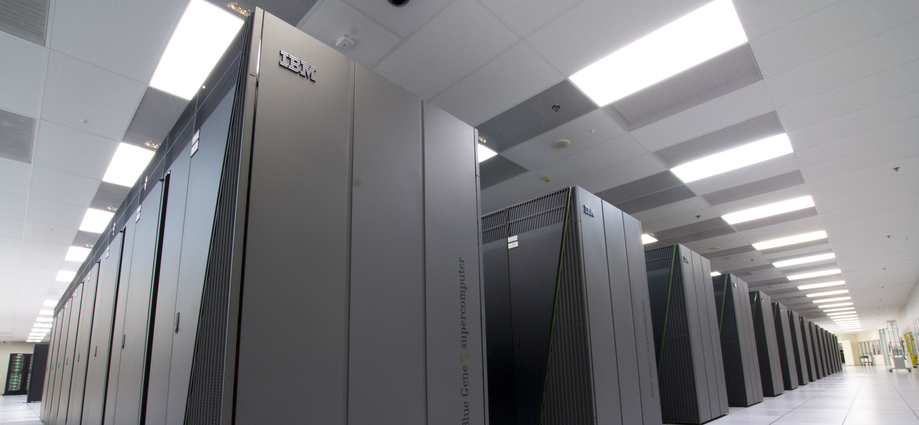Energy Department to invest $16 million to accelerate computer design of materials
 (Download Image)
Lawrence Livermore will use the Vulcan supercomputer to study transition metal-oxides.
(Download Image)
Lawrence Livermore will use the Vulcan supercomputer to study transition metal-oxides.
The Department of Energy announced Tuesday that it will invest $16 million over the next four years to accelerate the design of new materials through the use of supercomputers.
Two four-year projects will take advantage of superfast computers at DOE national laboratories by developing software to design fundamentally new functional materials destined to revolutionize applications in alternative and renewable energy, electronics and a wide range of other fields. The research teams include experts from universities and other national labs.
One team is led by Oak Ridge National Laboratory (ORNL), in which Lawrence Livermore National Laboratory (LLNL) is participating; the other team is led by Lawrence Berkeley National Laboratory (LBNL).
Researchers will partner with scientists from national labs and universities to develop software to accurately predict the properties of quantum materials with novel magnetism, optical properties and exotic quantum phases that make them well-suited to energy applications.
ORNL is heading the Center for Predictive Simulation of Functional Materials, which includes partners from Argonne, LLNL, Sandia National Laboratories, North Carolina State and the University of California–Berkeley. LLNL will focus on the study of transition metal-oxides, specifically on the development of new theoretical methods and simulation capabilities for the predictive calculation of the properties of complicated materials for energy applications.
The new grants - part of DOE’s Computational Materials Sciences (CMS) program begun in 2015 as part of the U.S. Materials Genome Initiative - reflect the enormous growth in computing power and the increasing capability of high-performance computers to model and simulate the behavior of matter at the atomic and molecular scales.
The teams are expected to develop sophisticated and user-friendly open-source software that captures the essential physics of relevant systems and can be used by the broader research community and by industry to accelerate the design of new functional materials.
"Given the importance of materials to virtually all technologies, computational materials science is a critical area in which the United States needs to be competitive in the 21st century and beyond through global leadership in innovation," said Cherry Murray, director of DOE’s Office of Science, which is funding the research. "These projects will both harness DOE existing high performance computing capabilities and help pave the way toward ever-more sophisticated software for future generations of machines."
Researchers are expected to make use of the 30-petaflop/s Cori supercomputer now being installed at the National Energy Research Scientific Computing Center (NERSC) at Berkeley Lab, the 27-petaflop/s Titan computer at the Oak Ridge Leadership Computing Facility (OLCF) and the 10-petaflop/s Mira computer at Argonne Leadership Computing Facility (ALCF). OLCF, ALCF and NERSC are DOE Office of Science User Facilities. One petaflop/s is 1015 or a million times a billion floating-point operations per second.
In addition, a new generation of machines is scheduled for deployment between 2016 and 2019 that will take peak performance as high as 200 petaflops. Ultimately the software produced by these projects is expected to evolve to run on exascale machines, capable of 1,000 petaflops and projected for deployment in the mid-2020s.
Research will combine theory and software development with experimental validation, drawing on the resources of multiple DOE Office of Science User Facilities, including the Advanced Light Source at LBNL, the Advanced Photon Source at Argonne National Laboratory (ANL), the Spallation Neutron Source at ORNL and several of the five Nanoscience Research Centers across the DOE national laboratory complex.
The new research projects expand the ongoing CMS research effort with three initial projects, led respectively by ANL, Brookhaven National Laboratory and the University of Southern California.
Contact
 Anne M. Stark
Anne M. Stark
[email protected]
(925) 422-9799
Related Links
DOE Office of ScienceMaterials Genome Initiative
Tags
HPC, Simulation, and Data ScienceSupercomputing
DOE
Office of Science
Computing
Featured Articles







